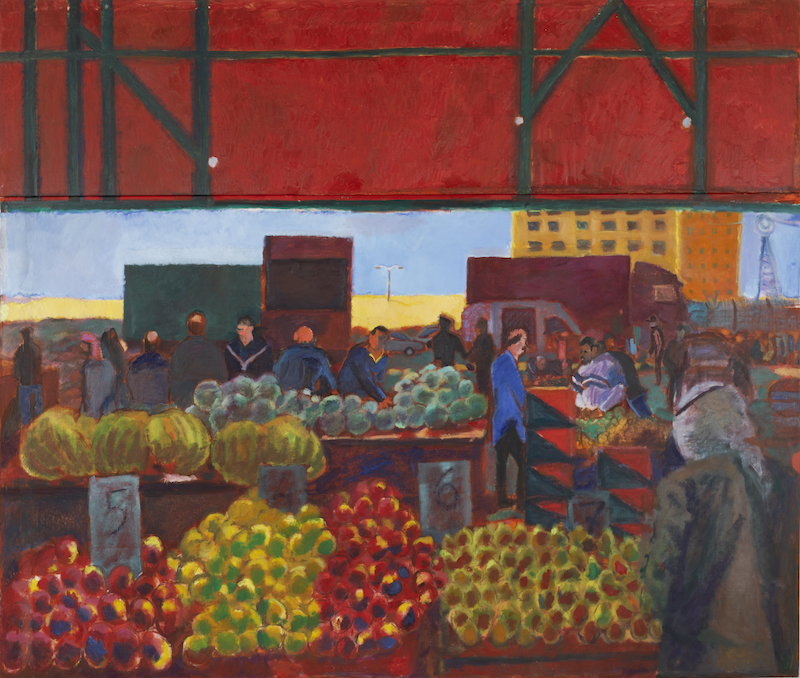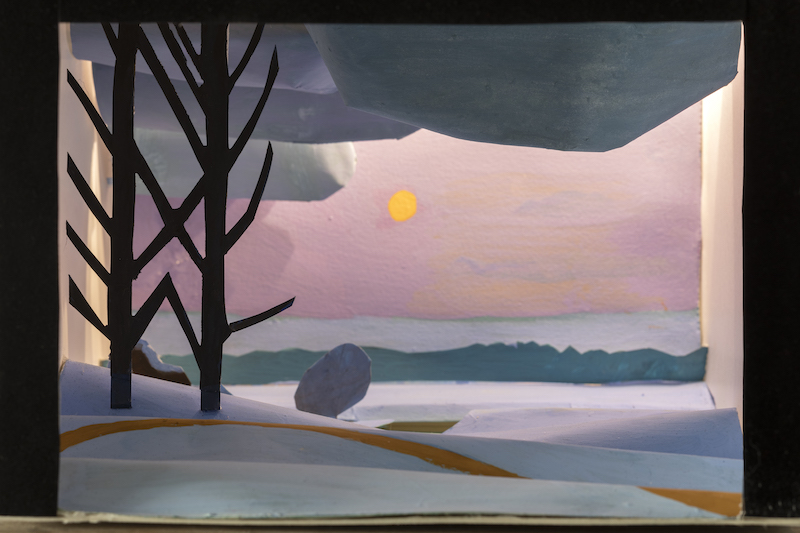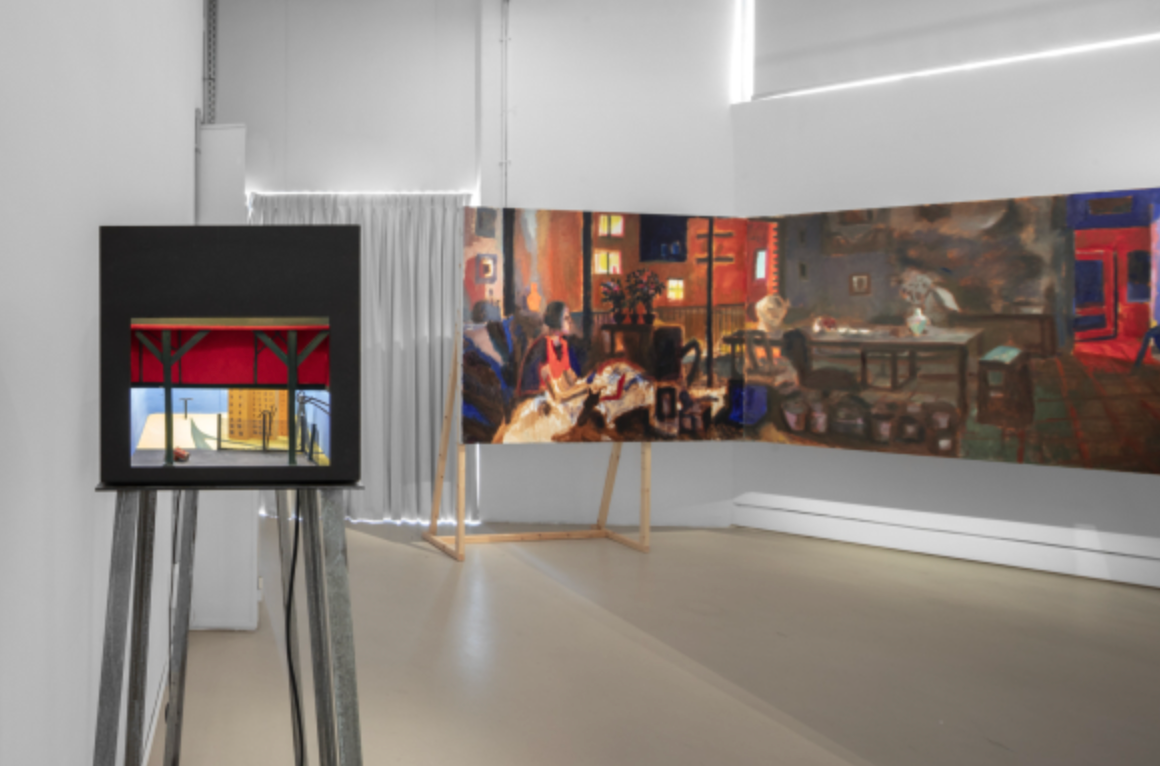It was while she still lived in Moscow that artist Natalia Zourabova began dreaming of Israel’s desert landscapes, the great expanses, warmth and tones of the arid land.
Those colors and tones of the desert are front and center in Zourabova’s latest collection of oil paintings, “Arad,” named for the small city on the border of the Negev and Judean deserts, now being exhibited at Artport, Tel Aviv’s contemporary art center.
The massive, wall-sized paintings don’t actually depict desert vistas, but they are deeply inspired by Zourabova’s seven years spent in Beersheba, Israel’s southern capital where she first lived when arriving in Israel.
The colors and themes of the city of Arad are there as well, as Zourabova spent four months in the development town in 2018 as part of an artist residency.
“In Beersheba, I always heard about Arad as a nicer city,” said Zourabova. “I thought of the city as a kind of dream, and when I got there, I realized there was something to that utopia.”
Get The Times of Israel's Daily Edition by email and never miss our top stories
Arad is known as Israel’s first planned city, conceived of in the 1920s and more fully established in 1962 as an Israeli development town.

From artist Natalia Zourbova’s exhibit ‘Arad’ at Tel Aviv’s Artport contemporary art center, until April 15, 2023 (Courtesy Artport)
By chance, Arad’s population grew significantly with immigration from the former Soviet Union but its population is diverse, said Zourabova, with Jews, Bedouins and Black Hebrews, as well as new immigrants.
“It has this architecture that’s fitting to the desert, and all these different people living there,” said Zourabova. “But it’s an urban dream that wasn’t realized.”

Artist Natalia Zourbova has a new exhibit, ‘Arad,’ at Tel Aviv’s Artport, on display through April 15, 2023 (Courtesy Artport)
The time Zourabova spent in Arad was productive, leading her to create prints and paper works of everything she was seeing and considering in the desert city.
“I knew that I had to do something with this dream,” said Zourabova. “It was my goal and I got there, especially while living in Beersheba, which is such a hard place.”
And yet, Arad remained a dream for her, a utopia that wasn’t fulfilled because the city she had dreamed of didn’t fully exist in the way she had hoped. The six works that emerged from Zourabova’s images of Arad are named for those hopes and dreams.

From artist Natalia Zourbova’s exhibit ‘Arad’ at Tel Aviv’s Artport contemporary art center, until April 15, 2023 (Courtesy Artport)
“The exhibit is about a kind of dream, about a kind of city in this country, all built on my observations,” she said.
The paintings are life-sized, far larger than Zourabova’s usual canvases, and more akin to her earlier work, prior to her life in Israel, when she worked in theater design in Moscow and Berlin.
Zourabova spent seven years in theater design but turned to individual artistry when she arrived in Israel. Still, she found herself wanting to work on more life-sized pieces a few years ago, the kind of imagery that viewers sense they could walk into, if possible.
The imagery in these paintings are familiar from nearly any location in Israel, the outdoor fruit and vegetable market that’s located in every city and town, the local mall, as well as the sometimes old, rundown hotels that can be found in Arad, and elsewhere.

From artist Natalia Zourbova’s exhibit ‘Arad’ at Tel Aviv’s Artport contemporary art center, until April 15, 2023 (Courtesy Artport)
“I still love the south,” said Zourabova, who has been living in Jaffa for the last ten years. “It’s the ideal, the Israeli ideal as personified by [David] Ben-Gurion,” Israel’s first prime minister who moved to the Negev when he retired.
One of the works, an ode to Russian romance and to the Russian countryside in winter, inspired Zourabova to delve into 3D-printed dioramas, another area of creativity that she had neglected for a while, harkening back to her theater days.
She first did one for the Russian work, and eventually decided to make one for each piece, representing the place that was first depicted in a painting.
“It really made me happy to work like this,” said Zourabova. “It’s to understand and interpret what I’m thinking about.”
“Arad” at Artport, 8 Rechov Hamal, Tel Aviv, through April 15.


